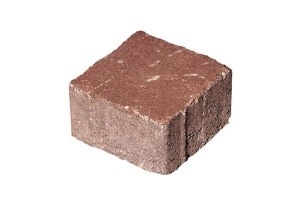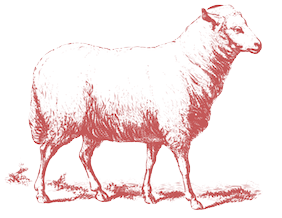Eureka! I've had an idea. In my attempt to become an ever-more educated cheese-maker I also am working to become an ever-more educated cheese-eater. Given that I have the great benefit of having an excellent cheesemonger here in Atlanta to provide me with a wide and ever-changing variety of cheeses from both near and far, I am starting my first series on this blog: what cheese am I eating now?
In this series of posts, I will let the folks at home know what new cheese is in my fridge, where it comes from, any history or interesting features I can dig up, and of course, how it tastes. This endeavor will also let me practice describing the taste of cheese, which is more difficult than it seems. Just so you know, when I describe something as baby barf or wet hay, I'm not making it up. I'm using a flavor wheel for cheese aromatics. It's a bit of a pseudo-science, since it depends so heavily on the individual taster, but it's good to work within a framework of agreed-upon terms rather than to just make something up.
Additionally, I will give the cheese a rating. I cooked up this scale a couple of years ago when I first started journaling cheeses, and I like it:
0: truly awful, why oh why did anyone ever make this? (pre-shredded, store brand, or generally poorly made: too much salt, too ammoniated, too propreonic, etc.) 1: Reasonable, overall unpleasant, but has some redeeming virtues, what I call "sandwich cheese" (a mediocre version of a standard cheese: Tillamook, etc.) 2: I don't like it, but I can see that someone else would. (Lumiere) 3: Good, solid standard D.O.P. cheese, par for the course, what you would expect (Parmigiano-Reggiano, Roqufort, Gruyere, Emmentaler) 4: Excellent, a very good, very nice cheese with unique and overall pleasant qualities, few complaints (Constant Bliss) 5: Supurb, really exceptional cheese, once I start eating, it can be hard to stop, great affection, no complaints (Bonne Buche, Green Hill) 6: Out of this world, mind-blowing, perfect in all ways, in line with personal and universal harmonies of flavour (Cashel Blue, Roaring Forties Blue)
Again, this is just where I put things. I claim no universal cheese-tasting knowledge nor exceptional abilities. This system is just a tool to communicate what I like.
Our debut cheese is Sampietrino:
 When I was visiting Star, Tim (my local, wonderful cheesemonger) presented me with a huge, square brick of cheese. He suggested building a house with it. It's brick-like structure is where this cheese gets its name. Sampietrini refers to the cubic pavers used in typical Italian roads.
When I was visiting Star, Tim (my local, wonderful cheesemonger) presented me with a huge, square brick of cheese. He suggested building a house with it. It's brick-like structure is where this cheese gets its name. Sampietrini refers to the cubic pavers used in typical Italian roads.
 I am always entertained at how the Italians name foods after the appearance of commonplace things. I'm thinking of cappuccino, the coffee drink named for the Capuchin monks, who wore a brown robe with a white hood, called a capuccio. The visual analogy is clear in both cases. Indeed, there's nothing fancy or pretentious about these names. They just happen to be old and foreign and in need of a bit of context. I often quote Tim, who says, "it's just cheese!" Part of what makes him such a good cheesemonger is the fact that he does his part to divest us of any misconceptions we may have about cheese being an elite food. The other day, Tim was lamenting the fact that a local cheesemaker gave one of their cheeses a German name. The farm is not in Germany, it's not a German-style cheese, and the cheesemakers aren't German. It's pretty much a way to make the cheese seem fancier. As Garrison Keillor writes in this month's National Geographic, "nothing that is farm oriented or pigcentric is even remotely upscale." It's preserved milk, after all, and the process comes with all the dirt and grime and body fluids (after all, what is milk but a body fluid?) that comes with raising livestock. Cheese is about place, it's about where it's made and the folks who live there and who got to eat it first. If your cheese looks like the bricks used to pave your local streets, why not call it that? If it smells like the pigs who live at your neighbor's down the road, name it after the neighbor. But I digress.
I am always entertained at how the Italians name foods after the appearance of commonplace things. I'm thinking of cappuccino, the coffee drink named for the Capuchin monks, who wore a brown robe with a white hood, called a capuccio. The visual analogy is clear in both cases. Indeed, there's nothing fancy or pretentious about these names. They just happen to be old and foreign and in need of a bit of context. I often quote Tim, who says, "it's just cheese!" Part of what makes him such a good cheesemonger is the fact that he does his part to divest us of any misconceptions we may have about cheese being an elite food. The other day, Tim was lamenting the fact that a local cheesemaker gave one of their cheeses a German name. The farm is not in Germany, it's not a German-style cheese, and the cheesemakers aren't German. It's pretty much a way to make the cheese seem fancier. As Garrison Keillor writes in this month's National Geographic, "nothing that is farm oriented or pigcentric is even remotely upscale." It's preserved milk, after all, and the process comes with all the dirt and grime and body fluids (after all, what is milk but a body fluid?) that comes with raising livestock. Cheese is about place, it's about where it's made and the folks who live there and who got to eat it first. If your cheese looks like the bricks used to pave your local streets, why not call it that? If it smells like the pigs who live at your neighbor's down the road, name it after the neighbor. But I digress.
Tim cut in and let me try a few thin slices. It was fantastic. The texture is really beautiful. It's a semi-hard aged cheese, but its cross-section looks like a bloomy-rind: creamy near the rind that becomes dense and slightly crumbly towards the center (the picture does not do it justice). It's a combination of cow and sheep milk, so it's got a lovely, super-creamy mouthfeel and is quite complex. The rind is nutty and strongly grassy with quite a bit of barnyard and some ammonia. The cheese itself is sweet, mildly salty, and lactic in the center, and becomes more complex in the creamier outer areas where there are flavors of cooked cabbage and leather. It's also got some pretty serious umami going on. Very, very delicious. (4)

